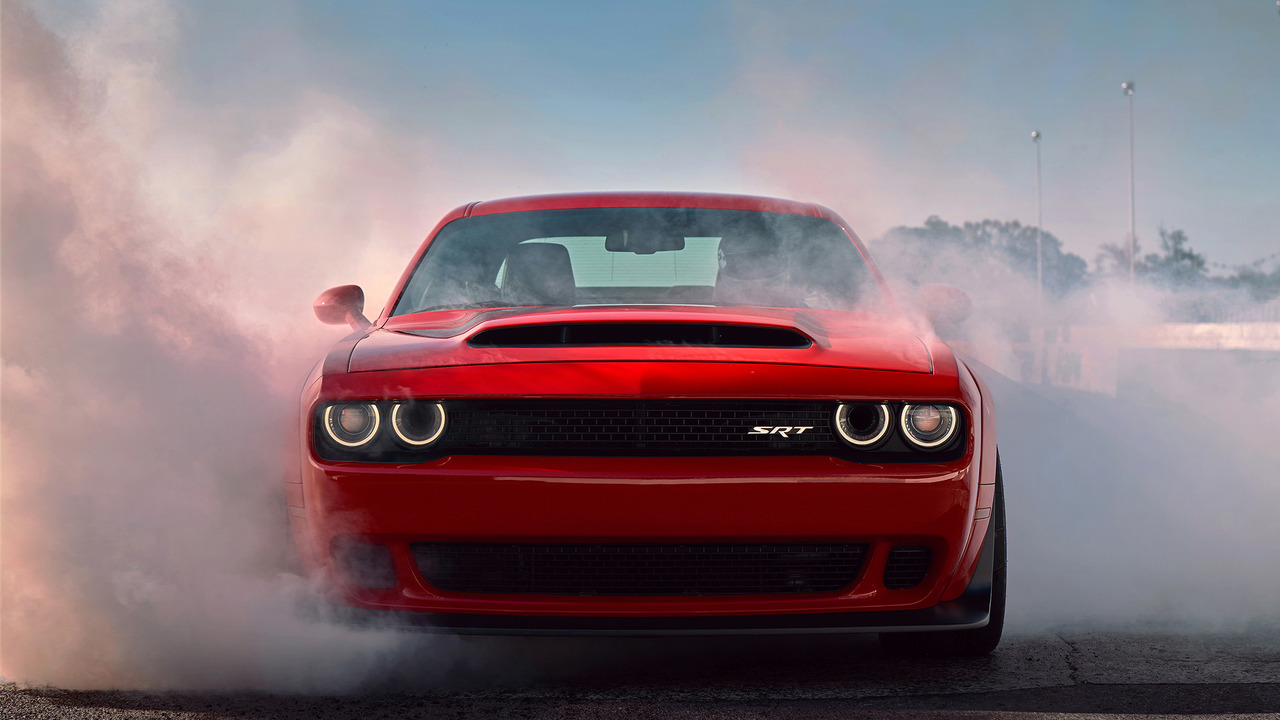
The Return of the Hemi: A Glimmer of Hope for V8 Enthusiasts
In a world increasingly dominated by electric vehicles and stringent emissions regulations, the roar of a V8 engine is becoming a nostalgic sound. For fans of Dodge, Ram, and Jeep, the absence of the iconic Hemi V8 in recent models has been a painful reality. While the Durango and Wrangler 392 valiantly hold the fort, the engine’s disappearance from the Charger and 1500 left a void that many believed would never be filled. But what if there’s a change of heart? What if the thunderous rumble of the Hemi is poised to make a triumphant return? The automotive landscape is ever-evolving, and just when we think we’ve seen the last of an era, a spark of hope ignites. This time, it’s the potential revival of the Hemi V8, an engine that has powered generations of American muscle and defined the spirit of performance.Imagine the Charger, not as a silent electric marvel, but as a snarling beast with a Hemi under the hood, ready to unleash its fury on the asphalt. Picture the 1500, not just as a workhorse, but as a force to be reckoned with, its V8 heart pumping with raw power. This isn’t just about nostalgia; it’s about preserving a legacy, a symbol of American engineering prowess that deserves to live on.
A recent report has sent shockwaves through the automotive community, suggesting that Stellantis, the parent company of Dodge, Ram, and Jeep, is preparing to ramp up production of Hemi V8 engines. According to Mopar Insiders, citing unnamed sources, Stellantis will soon commence building 5.7-liter, 6.4-liter, and supercharged 6.2-liter Hemi V8 engines at its Dundee Engine Plant in Michigan. This news comes as a welcome surprise, especially considering the prevailing narrative of electrification and downsizing. The Dundee Engine Plant, a cornerstone of American automotive manufacturing, could once again become a hub for V8 power, breathing life back into an engine that many believed was destined for extinction. But why now? What has prompted Stellantis to reconsider its stance on the Hemi? The answer may lie in a confluence of factors, including shifting market demands, evolving regulatory landscapes, and perhaps even a change in leadership.
The automotive industry is in constant flux, and what was once considered inevitable can quickly change course. The resurgence of the Hemi V8 could be a testament to the enduring appeal of traditional engines, a recognition that not everyone is ready to embrace the electric future just yet. While electric vehicles undoubtedly have their merits, they lack the visceral experience, the raw emotion that a V8 engine provides. The Hemi is more than just an engine; it’s a symbol of freedom, of unbridled power, of the American spirit. It’s a connection to a bygone era, a reminder of a time when cars were loud, bold, and unapologetically powerful. For many, the Hemi represents the essence of driving, the feeling of being in control of a machine that is both exhilarating and awe-inspiring.
The Tavares Factor: A Shift in Strategy?
The report also suggests that the decision to revive the Hemi may be linked to the departure of Carlos Tavares, the former CEO of Stellantis. According to the report, Tavares was a driving force behind the decision to phase out the Hemi, and his resignation may have opened the door for a change in strategy. It’s no secret that Tavares was a strong advocate for electrification, and his vision for Stellantis was heavily focused on electric vehicles. However, his departure may have created an opportunity for those within the company who still believe in the Hemi to make their voices heard. The automotive industry is full of strong personalities and conflicting visions, and the departure of a key figure can often lead to significant shifts in direction. In this case, it appears that Tavares’ resignation may have paved the way for the Hemi to make a comeback.
The Gen III architecture, which was first launched in 2003, will serve as the foundation for the revived Hemi engines. This architecture has proven to be reliable and capable, and it has powered some of the most iconic vehicles in American automotive history. By basing the new engines on this platform, Stellantis can leverage its existing expertise and infrastructure, reducing development costs and time. But the rumors don’t stop there. There’s also talk of an even larger displacement variant being added to the lineup, which would undoubtedly send shivers down the spines of performance enthusiasts everywhere. Imagine a Hemi with even more power, even more torque, even more of that signature V8 rumble. It’s a tantalizing prospect, one that could solidify the Hemi’s place in automotive history for years to come.
The decision to stick with the Gen III architecture is a strategic one, allowing Stellantis to capitalize on its existing knowledge and resources while still delivering the performance and sound that Hemi enthusiasts crave. It’s a balance between innovation and tradition, a recognition that sometimes the best way forward is to build upon a solid foundation. The Gen III Hemi has proven its mettle over the years, and its continued use ensures that the new engines will be both reliable and powerful.
Regulatory Relief: A Windfall for V8s?
Adding fuel to the fire, fears of increasingly stringent emissions targets are waning, thanks to recent actions by the US government. The current administration has ordered a review of fuel economy standards and has signaled a willingness to ease regulations on the auto industry. This shift in policy could provide a much-needed reprieve for V8 engines, allowing automakers to continue producing them without facing crippling penalties. The regulatory landscape plays a significant role in shaping the automotive industry, and changes in government policy can have a profound impact on the types of vehicles that are produced. The easing of emissions regulations could be a game-changer for V8 engines, giving them a new lease on life in an era where they were once thought to be on the brink of extinction.
Even as the industry embraces electrification and hybrid technologies, the allure of a gas-powered Dodge coupe with a V8 remains strong. There’s something inherently appealing about the combination of classic design, raw power, and the unmistakable sound of a V8 engine. It’s a formula that has captivated car enthusiasts for generations, and it’s a formula that continues to resonate today. While electric vehicles offer impressive performance and efficiency, they lack the soul, the character that a V8 engine provides. The rumble of a V8 is more than just noise; it’s a symphony of mechanical precision, a testament to the ingenuity of engineers who have dedicated their lives to perfecting the art of combustion.
The enduring appeal of the V8 is a testament to its timeless design and the visceral experience it provides. It’s a connection to the past, a reminder of a time when cars were more than just transportation; they were symbols of freedom, of individuality, of the pursuit of performance. Even in an era of autonomous driving and electric powertrains, the V8 continues to hold a special place in the hearts of car enthusiasts, a reminder that sometimes the simplest solutions are the most satisfying.
Ram’s Perspective: A Hesitant Embrace
Ram CEO Tim Kuniskis has hinted at the possibility of the Hemi’s return to the truck brand, but he cautioned that it wouldn’t be an immediate development. According to Kuniskis, the current Hemis are not designed to integrate seamlessly with the new 1500’s electrical architecture. However, he left the door open, suggesting that it’s not an impossibility, just a matter of time and engineering. The integration of new technologies into existing platforms can be a complex and challenging process, and it’s important to ensure that all systems work together harmoniously. The 1500’s electrical architecture is likely designed to accommodate a wide range of powertrains, including electric and hybrid options, and integrating a traditional V8 engine may require significant modifications.
The electrical architecture of modern vehicles is becoming increasingly sophisticated, with a complex network of sensors, controllers, and actuators that work together to manage various functions. Integrating a V8 engine into this system requires careful consideration of factors such as fuel management, emissions control, and diagnostic capabilities. The Hemi, with its traditional design and mechanical components, may not be directly compatible with the latest electrical systems, requiring engineers to develop innovative solutions to bridge the gap. The challenge lies in preserving the character and performance of the Hemi while ensuring that it meets the stringent requirements of modern vehicle technology.
Despite the challenges, Kuniskis’ comments offer a glimmer of hope for Ram fans who have been longing for the return of the Hemi. It suggests that the company is at least considering the possibility, and that they are actively exploring ways to make it happen. The return of the Hemi to the Ram lineup would be a significant boost for the brand, attracting a loyal following of truck enthusiasts who value power, performance, and the unmistakable sound of a V8 engine. It would also provide Ram with a competitive edge in a market that is increasingly focused on fuel efficiency and alternative powertrains.
The Road Ahead: Uncertainty and Optimism
While the report from Mopar Insiders is encouraging, it’s important to remember that it’s based on unnamed sources and has not been officially confirmed by Stellantis. Motor1 has reached out to Stellantis for comment, but as of this writing, they have not received a response. It’s always wise to approach such reports with a healthy dose of skepticism until official confirmation is provided. The automotive industry is notorious for rumors and speculation, and it’s not uncommon for reports to be inaccurate or misleading. However, the fact that this report has gained traction within the automotive community suggests that there may be some truth to it. Whether it’s wishful thinking or a genuine indication of Stellantis’ plans, the possibility of a Hemi revival is undoubtedly exciting for V8 enthusiasts everywhere.
The future of the Hemi V8 remains uncertain, but the latest report offers a glimmer of hope for those who believe in the power and legacy of this iconic engine. The automotive industry is constantly evolving, and the decisions that automakers make today will shape the vehicles of tomorrow. Whether the Hemi makes a triumphant return or fades into automotive history, its impact on the industry and the hearts of car enthusiasts will never be forgotten. The rumble of a V8 engine is more than just noise; it’s a symbol of freedom, of power, of the American spirit. And as long as there are those who appreciate the visceral experience of driving a car with a V8 under the hood, the Hemi will continue to live on in our memories and our dreams.

